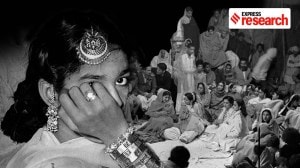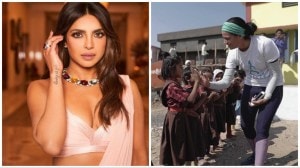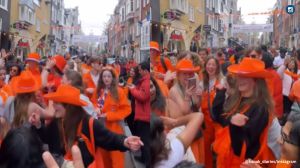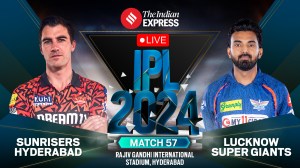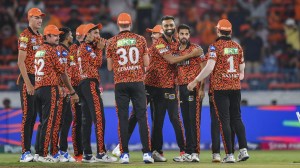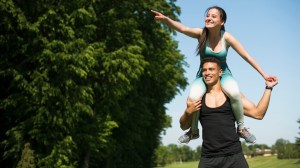- India
- International
Dalits to Nadars, the five caste groups driving Tamil Nadu polls
Dalits, Vanniyars, Thevars, Gounders and Nadars hold the reins of political control due to numbers as well as influence. DMK has a broad-based coalition across caste groups; BJP has been reaching out to influential OBCs
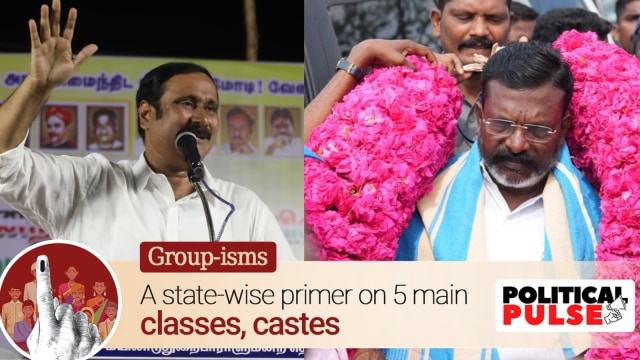 PMK leader and Anbumani Ramadoss and VCK leader Thol Thirumavalavan. (Facebook)
PMK leader and Anbumani Ramadoss and VCK leader Thol Thirumavalavan. (Facebook) As Tamil Nadu heads for elections in three days, the political battlefield has many small caste-based parties and a BJP determined to make inroads. Perceived as a Brahmin-upper caste party earlier, the BJP is trying to shed the image with outreach to influential OBC groups, and has tied up with several caste-based parties. The ruling DMK, which has a broad-based coalition across caste groups, also has formed alliances with these smaller parties.
The five groups which will play a crucial goal on as the DMK-led alliance seeks for a repeat of its 39 Lok Sabha seats out of 40 performance of 2019, and the BJP tries to break in:
* Dalits
In the absence of a caste census, official sources put the number of Dalits in Tamil Nadu, including s at around 19% to 21% of the state’s population. They are spread across the state, with their population higher in districts such as Cuddalore, Villupuram, Tiruvallur, and Madurai.
The larger Dravidian political movement, evolving over the last two centuries, of whose products are the Dravida Kazhagam, DMK and AIADMK, has always reached out to Dalits.
Immanuel Sekaran, a freedom fighter from Ramanathapuram, is considered one of the Dalit icons in the state’s modern political history and his death anniversary is observed as a major event in the community. MP Thol Thirumavalavan, the founder of Viduthalai Chiruthaigal Katchi (VCK), which has been one of the closest DMK allies, advocates for Dalit rights and represents the voice of Tamil Dalits at the national level.

* Vanniyars
Vanniyars, who are from northern Tamil Nadu, are one of the largest and most politically-active Most Backward Classes (MBCs) in the state. OBCs are separated into BC and MBC groups in the state. Vanniyars are a largely agrarian community and have continued land ownership despite the spread of industrialisation, with names of its members coming up routinely in relation to anti-Dalit riots in the state.
Vanniyars are politically represented through the Pattali Makkal Katchi (PMK), now a part of the BJP-led NDA. Led by S Ramadoss, the party has been influential in state politics due to the substantial numbers of the Vanniyars, their organised structure, and active engagement in mainstream politics. Ramadoss first organised Vanniyars in the 1980s and is credited with significant improvements in the community’s educational status after the 1990s.
The Vanniyars are estimated to constitute about 12% to 15% of Tamil Nadu’s population, largely based in Villupuram, Cuddalore, Thiruvannamalai, and parts of Vellore, with a presence in Salem and Dindigul as well.
* Thevars
Largely concentrated in Tamil Nadu’s southern districts of Madurai, Theni, Dindigul, Sivaganga, and Ramanathapuram, Thevars have been a politically influential community and also fall in the MBC category. A number of Thevar politicians are in the AIADMK. Former Chief Minister J Jayalalithaa’s close aide V K Sasikala and rebel party leader O Panneerselvam are both Thevars.
The political character of Thevars was significant during the British period. Pasumpon Muthuramalinga Thevar, a freedom fighter and a leader revered in the Thevar community, was closely associated with the Indian National Congress and later with the Forward Bloc. His birthday is celebrated as “Thevar Jayanthi”. Thevars are also said to have actively taken part in the Armed struggle led by Subhas Chandra Bose.
The community’s population is estimated to be 10%-12%.
* Gounders
This community falls in the BC category and accounts for around 5% to 7% of the population. They are concentrated in Western Tamil Nadu, or the Kongu Nadu region, which includes districts such as Coimbatore, Tiruppur, Erode, Namakkal, Karur, and Salem.
Mainly dependent on agriculture and related industries, the community is also known for entrepreneurship, playing a key role in the regional industries. The community is known for faces such as N Mahalingam, an industrialist and philanthropist involved in educational initiatives.
When Edappadi K Palaniswami, a Gounder, took control of the AIADMK after Jayalalithaa’s death, he ousted the Sasikala family and O Panneerselvam from the party and allocated key Cabinet portfolios to many Gounders.
* Nadars
Nadars, a trading community, have a strong presence in commerce and politics. Community leaders cut across parties and have been effective in leveraging their economic success into political influence.
In 1921, the Nadar community established The Nadar Bank Limited, which was later renamed the Tamilnad Mercantile Bank in 1962. In 1922, community members P Ayya Nadar and A Shanmuga Nadar travelled to Kolkata to learn about the safety match industry, leading to the establishment of a manual match production under the ‘Bengal Lights’ banner in Sivakasi. The town still continues to be a centre of firecracker production. The most prominent Nadar in Tamil Nadu’s political history is K Kamaraj, a veteran Congressman and the former Chief Minister.
Along with Hindu Nadars, Christian Nadars also are a significant presence in state institutions and power centres. A relatively smaller community, their population is estimated at around 4% to 6%. They are mainly located in southern Tamil Nadu districts of Kanyakumari, Tirunelveli, Thoothukudi, and Virudhunagar.
May 08: Latest News
- 01
- 02
- 03
- 04
- 05







